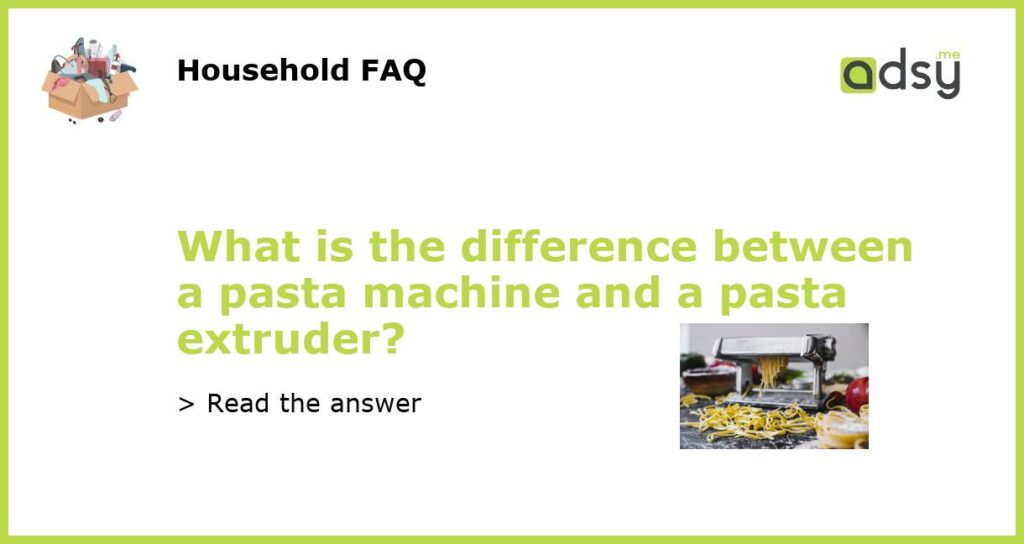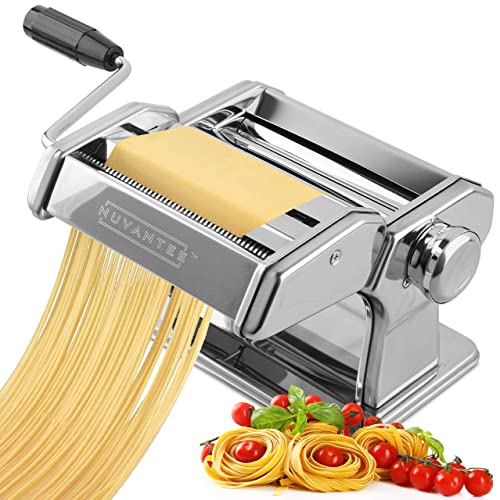The Difference Between a Pasta Machine and a Pasta Extruder
If you are a fan of homemade pasta, you are probably familiar with the traditional pasta making process. It usually involves using a rolling pin to roll out the dough and then cutting it into various shapes. However, if you want to take your pasta making skills to the next level, you might consider investing in a pasta machine or a pasta extruder. While both of these machines serve the same purpose of making pasta, there are some notable differences between the two. Let’s take a closer look at what sets them apart.
Pasta Machine: Basics and Functionality
A pasta machine, also known as a pasta roller or pasta maker, is a manual or electric device that is specifically designed to roll out pasta dough. It consists of two adjustable rollers that work together to flatten the dough to the desired thickness. Once the dough is rolled out, it can be further cut into various pasta shapes using additional attachments or by hand. Pasta machines are flexible in terms of the pasta shapes they can produce, giving you the freedom to create a wide range of classic pasta shapes such as tagliatelle, fettuccine, or lasagna sheets.
Pasta Extruder: How It Works and Its Capabilities
A pasta extruder, on the other hand, is a machine that forces pasta dough through small holes to shape it into specific pasta shapes. Unlike a pasta machine, a pasta extruder does not roll out the dough. Instead, it applies pressure to push the dough through a metal die, resulting in pasta shapes with uniform thickness and texture. Pasta extruders are known for their ability to produce more intricate pasta shapes that are difficult to achieve with a pasta machine, such as macaroni, penne, or rigatoni.
Key Differences: Functionality and Range of Shapes
The main difference between a pasta machine and a pasta extruder lies in their functionality and the range of pasta shapes they can produce. A pasta machine is primarily used for rolling out pasta dough and can create a variety of flat pasta shapes, while a pasta extruder is designed for shaping the dough into more complex pasta shapes that require extrusion. So, if you are looking to make classic, flat pasta shapes like spaghetti or linguine, a pasta machine is the right choice for you. However, if you want to explore a wider range of pasta shapes and experiment with more intricate designs, a pasta extruder is the way to go.
Considerations: Budget, Frequency of Use, and Personal Preference
When deciding between a pasta machine and a pasta extruder, there are a few factors to consider. Firstly, consider your budget. Pasta machines are generally more affordable than pasta extruders, especially if you opt for a manual pasta machine. Secondly, think about how frequently you plan to use the machine. If you are a casual pasta maker who only occasionally prepares homemade pasta, a pasta machine might suffice. However, if you are a pasta enthusiast or plan to make pasta regularly, investing in a pasta extruder can provide you with endless possibilities and save you time in the long run. Lastly, personal preference plays a role. Some people enjoy the hands-on process of using a pasta machine, while others appreciate the convenience and efficiency of a pasta extruder.
Choose Based on Your Pasta Making Goals
So, in conclusion, the main difference between a pasta machine and a pasta extruder lies in their functionality and the range of pasta shapes they can produce. If you are looking to make classic, flat pasta shapes, a pasta machine is the right choice for you. However, if you want to explore a wider range of pasta shapes and experiment with more intricate designs, a pasta extruder is the way to go. Consider your budget, frequency of use, and personal preference before making your decision. Ultimately, both machines can elevate your pasta making skills and bring a new level of creativity to your kitchen.






